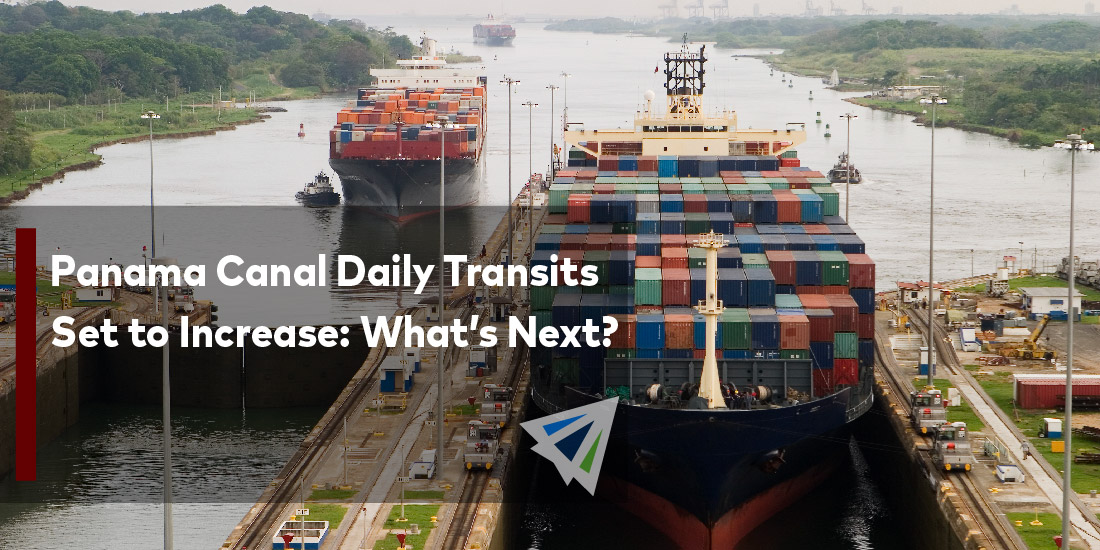The Panama Canal Authority (ACP) is set to increase daily transits and raise maximum permitted draft levels, throughout this month and into June. This news brings a sign of relief to shippers who have dealt with restricted daily transits over the past year.
In this blog, we delve into the specifics of these transit and draft increases, along with suggestions on further measures the Canal could adopt to effectively manage water levels at Gatun Lake.
All Rise: Daily Transits and Maximum Draft Levels
On April 16th, the ACP announced daily transits will increase to 31 by the second half of May. By June 1st, that number will jump to 32. The ACP says water levels at the main reservoir (Gatun Lake) for the Canal locks have been better than anticipated, which allows more vessels to go through.
Before this announcement, daily transits sat at 27. Something to note – the Gatun locks are scheduled to have maintenance work done this month (May 7th-15th). This will temporarily reduce daily transits from 20 to 17 at the Panamax locks, per the ACP.
Maximum draft levels will also see an increase in June. Vessels transiting the Neopanamax locks will see the maximum permitted draft to be raised to 45 feet (13.71 meters) starting June 15th – this is up from the present limit of 44 feet (13.41 meters).
A Glimpse of What Lies Ahead
Back in February, the ACP said they would need a $2 billion investment throughout the next six years to regulate Gatun water levels to avoid transit restrictions. This would allow them to build a pipeline through the Rio Indio reservoir to add more fresh water into Gatun.
In 2003, the ACP announced their feasibility design for the Rio Indio Water Supply Project. Details of this project, according to Engineering News-Record, include: a concrete-face rockfill dam with a crest at 83 ft., connected to Gatun Lake via an 8,350 meter long, 4.5 meter-diameter tunnel. Plus, two saddle dams in order to maintain the reservoir’s full supply level.
The ACP would need to receive approval from the Panama government in order to move forward with the proposal. Then it would be sent to the National Assembly for consideration. So far, there has been little to no action on this matter by the government.
Some stakeholders say this should have been done already. “If they had done that work a little while ago, it would have cost much less and they would have already solved the problems in terms of the piping and reservoirs,” Stuart Sandlin, North American President at Hapag-Lloyd said at a conference last month.
Looking Ahead
As we look ahead, this increase in daily transits and drafts is great news all around. Traffic through the Canal continues, as their efficiency and capacity enhancements remain crucial to sustain seamless maritime commerce. The hope is future plans will help improve the infrastructure that is needed for the Canal to meet the ever-changing demands of international trade in the years ahead.
Should you have any questions regarding this, please reach out to our team today.
Additionally, we have our weekly market updates that can provide you with relevant freight news, updates, developments across the industry, and more.
